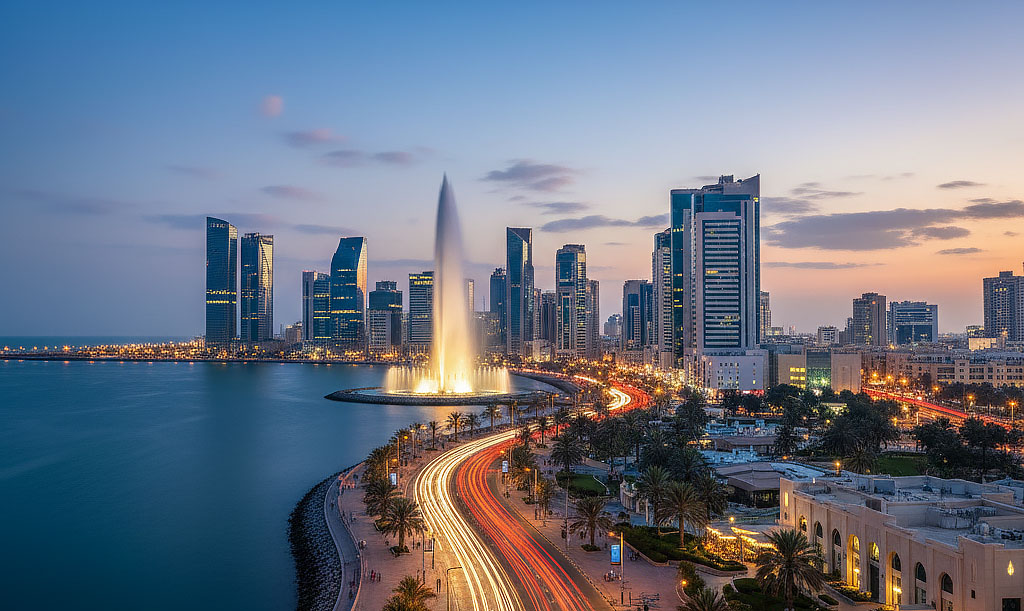
In mid-2025, Oman's real estate transactions climbed to over OMR 3.13 billion by November 2024, marking a 28 percent year-on-year surge driven by robust demand in logistics and tourism-linked areas. This momentum underscores how Oman's transport and connectivity projects are reshaping the property market, attracting foreign investors to emerging hubs like Duqm and Salalah where infrastructure upgrades have sparked double-digit price appreciations. Aligning with Vision 2040's diversification push, these Oman's transport and connectivity projects, from port expansions to rail networks, recall the early 2000s when initial highway developments in Muscat triggered 15-20 percent annual property gains in peripheral zones. Now, with foreign direct investment rising 41 percent in manufacturing and channeling 70 percent into infrastructure, Oman's transport and connectivity projects are forging high-value corridors, lifting residential prices by 7.3 percent in the first quarter and steering the market toward a $4.8 billion valuation in 2025.
Core Elements Driving Oman's Transport and Connectivity Projects
Oman's transport and connectivity projects underpin the nation's logistics vision under the Sultanate of Oman Logistics Strategy 2040, drawing RO 2.5 billion in investments through 2025 to enhance non-oil trade and multimodal links. Pivotal efforts include the UAE-Oman railway, a 303-kilometer, $3 billion line linking Sohar to Abu Dhabi, with construction underway since 2024 to cut freight durations and mesh with the GCC rail grid. Ports such as Duqm advance with 17-kilometer hydrogen pipelines and renewable integrations, while Salalah's upgrades bolster tourism commerce. Aviation under the National Aviation Strategy 2040 eyes six new airports by 2029, amplifying cargo and passenger throughput in Sohar and Salalah.
Road enhancements command a $14.8 billion allocation, featuring the Nizwa-Bahla dual carriageway tendered in July 2025 and the 265-kilometer Al Batinah Expressway phased at $2.6 billion. The Muscat Metro, in planning, envisions a 50-kilometer system with 36 stations to alleviate urban traffic, complemented by 10 gas pipeline expansions adding 208 kilometers in Dhofar. Innovative ventures like the Etlaq Spaceport's 2025 test launches tie space technology to wider connectivity. These Oman's transport and connectivity projects cultivate expansion in proximate regions, including Sultan Haitham City, where superior access aligns with escalating residential interest and property values.
Quantifying the Property Value Surge through Data and Trends
Oman's real estate sector is poised to attain $4.8 billion in 2025, advancing to $7.4 billion by 2030 at a 9.2 percent CAGR, fueled by infrastructure-induced residential demand. The first quarter of 2025 recorded a 7.3 percent year-on-year residential price escalation, led by land in linked districts, with apartments surging 17 percent. Transactions through April 2025 totaled OMR 833.9 million, up 9.7 percent, as GCC citizen contracts grew 24.4 percent around tourism sites like Hawana Salalah. Construction output rises 3.6 percent in 2025, backed by $120 billion in ongoing initiatives, heightening values near ports and rails.
This compilation from current analyses reveals how Oman's transport and connectivity projects support a 5.04 percent CAGR in residential real estate to 2029, with 62,800 units slated by 2030 and annual appreciations of 4-6 percent in infrastructure-rich locales. Patterns show foreign ownership easing and zero property taxes magnifying uplifts near budding centers like Muscat Hills.
Expert Insights on the Transport-Property Connection
Industry voices illuminate the fused advantages of Oman's transport and connectivity projects for real estate. "Oman’s real estate market is no longer sleeping, with foreign capital, billion-rial deals, and AI-fueled growth driving the sector forward," observed Balqees Al Kindy in a July 2025 LinkedIn post. This resonates with Vision 2040's sustainable urbanization thrust, where the Muscat Metro might elevate nearby property values by 10-15 percent.
Fahad Al Mukrashi remarked in a Gulf News article, "Oman-UAE Railway Project picks up pace: $2.5 billion network to boost trade and connectivity," highlighting rail's influence on industrial property demand. Abdelrahman Elhag of SDIC noted, "Sustainable urban development is becoming a cornerstone of Oman’s economic diversification strategy, driven by initiatives that emphasize renewable energy, efficient resource management, and community well-being." Such opinions demonstrate how Oman's transport and connectivity projects yield 8-12 percent passive returns in linked properties, appealing to tech-oriented investors.
Addressing Challenges in the Property Boom
Amid advances, Oman's transport and connectivity projects encounter obstacles that moderate property value rises. February 2025 transactions dropped 8.3 percent to OMR 362.3 million, tied to seasonal dips and demands for broader financing at forums like the Oman Real Estate Expo. Outlying governorates trail in residential progress from unfinished connections, while 0.81 percent inflation and supply chain strains inflate building expenses, possibly hindering affordability. Observers critique uneven advancement favoring cities, yet Vision 2040's equitable strategy, via smart city rollouts, seeks to alleviate this, promoting widespread property value growth.
Future Prospects for Sustained Property Value Growth
Ahead, Oman's transport and connectivity projects are set to magnify property values, with the Ports Development Strategy 2025-2040 and hydrogen systems unlocking paths for 9.19 percent residential CAGR to 2030. Investors eyeing logistics-proximate spots like Duqm may realize 8-12 percent gains, reinforced by tourism enclaves and residency perks. This frames Oman's transport and connectivity projects as vital to a diversified, post-oil landscape, yielding strong returns for wealth-driven approaches.

Become a member to Access our full network. The ultimate community for global investors.
























